


Human population, agriculture, livestock, economic growth and other factors have a complex and dynamic relationship with the forest resources. This chapter attempts to provide information on those factors that directly or indirectly impact the condition of forest resources in Nepal.
Nepal desires acceleration of economic development through the advancement of such sectors as agriculture, forestry, water resources, industry, tourism and transportation on the basis of comparative advantage and competitive capability. The country has given due priority to the reduction of population growth and promotion of economic and social equity among various sectors, regions, and communities mainly through agriculture and social sector programs.
The exponentially growing population of Nepal demands increasing amounts of goods and services from a limited amount of the utilizable land and forests. The 1991 census recorded 18.5 million people against 15.0 million in 1981, 11.6 million in 1971, 9.4 million in 1961, 8.3 million in 1951 and 6.3 in 1941 (Fig. 12). The population density has increased from 42.7 persons per km2 in 1941 to 125.6 persons per km2 in 1991 (CES, 1998). On average, the growth rate of the population is above two percent per annum (Appendix, Table 26). Currently, the people of Nepal live in more than 50,000 settlements (Appendix, Table 25) covered by more than 4,000 village development councils (VDCs).

Fig. 12. Human population
The dispersal of population (Appendix, Table 27) among the five development regions is not uniform (Fig.13). The Central Development Region is the most densely populated region while the Mid Western Development region is least inhabited region. During last decade, the five regions have grown at different rates but their relative ranking in terms of population density has remained roughly the same.
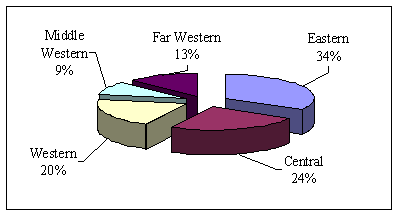
Fig. 13. Regional shares of population in 1991
Agriculture remains the backbone of economic development in Nepal and a majority of the people depend on it to earn their livelihood. It is the main basis for increasing income and employment. Population pressure on farms (Appendix, Table 28) is increasing (Fig. 14), particularly in the Terai.

Fig. 14 Number of persons per hectare of farm land
The average annual growth rate of agricultural gross domestic product varied from a negative one percent during the Fifth Plan to a positive five percent during the Sixth Plan. The agriculture sector in Nepal continues to be highly dependent on rain and its productivity has not increased significantly during past many decades. Nepal is now focusing on institutional changes to increase agricultural productivity through guarantees of land-ownership, providing land to landless farmers, extending land ownership and alleviating poverty by the promoting economic growth and employment by establishing, developing and expanding agriculture-based industries.
The livestock population is increasing (Appendix, Table 29) at a fast rate (Fig. 15) and its distribution among the five regions is significantly different (Appendix, Table 30).
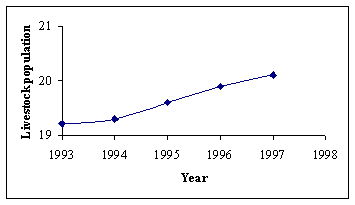
Fig. 15. Livestock population (cattle, buffalo, sheep and goats)
The population growth rates for different livestock are significantly different. The annual rates of growth of population (Appendix Table 29 and Fig. 16) of pigs and goats are the highest (more than 3 percent) and that of cattle the lowest (0.5 percent).
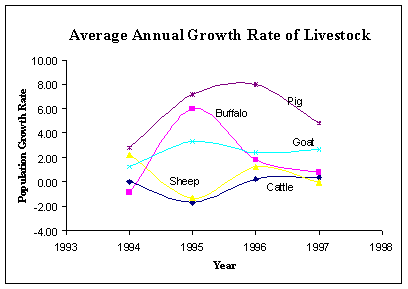
Fig. 16. Average annual growth rate of livestock population
Like many countries, the condition of natural resources in Nepal is positively correlated with the condition of its human resources. Nepal is developing its human resources for sustaining high levels of regionally balanced economic growth through extensive expansion of the social sector and bringing the backward sections of society into the mainstream of development. Such developmental efforts have rewarded Nepal; for example, literacy has increased exponentially during last four decades from a meager 5.3 percent to 39.6 percent in 1991 (Appendix, Table 31). The country plans to increase the literacy rate to 70 percent by the end of the IX Five Year Plan (2002) and expand its family planning program to gradually reduce the current rate of population growth.
Human resource development is being extended to the lowest institutions in the most backward regions of Nepal by providing primary education, primary healthcare, and clean drinking water facilities, etc. The sub-national offices are being strengthened to provide necessary support and coordination to local institutions for promoting economic and social development.
Nepal is streamlining the development and expansion of modern sectors through liberal, market-oriented economic policies while stressing the active role of the government in developing the rural sector. It is enabling and promoting the non-governmental organizations (NGOs) and local institutions to take leadership in the field of rural development.
The overall gross domestic product (GDP) of Nepal has increased from 2.6 percent during the Third Five Year Plan to 4.6 percent during the Eighth Five Year Plan even when the agricultural sector continues to have an adverse affect on the growth of GDP (Appendix, Table 32). The average annual overall GDP growth rates of all sectors excluding agriculture are much higher for example 6.0 percent during the VIII five year plan period (Appendix, Table 32). The GDP increased by forty two times during the last six Five Year Plans (III FYP: 1965-1966 to VIII FYP: 1992-1997) but per-capita nominal GDP has increased only by twenty one times due to population growth.
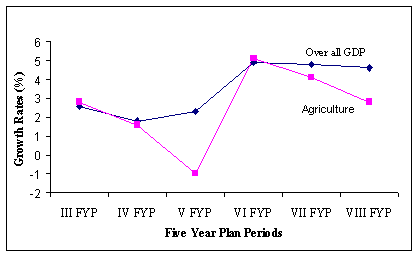
Fig. 17. Impact of agriculture sector on growth of GDP
During last ten years, prices have more than doubled (Appendix, Table 33), impeding economic growth. However, Nepal plans and expects that economic growth will accelerate to 6 to 8 percent per annum during coming twenty years. Nepal is confident that it can mobilize necessary local and foreign investment in priority sectors to achieve its desired rate of economic growth.
Nepal follows the traditional model of development and aims to increase the share of the economy in non-agriculture sectors to 75% and reduce the share of the agriculture sector (including forestry) to 25% in next twenty years (Appendix, Table 34). To this purpose, Nepal plans to contain the growth rate of agriculture sector at 5%. The share of the agriculture sector in GDP has actually declined from 65 percent in 1964 to about 41 percent in 1996 (Appendix, Table 36).
The share of forestry (Fig. 18), a sub sector of agriculture, in the economic growth in general, and within agriculture sector in particular, is declining (Appendix, Table 37). The resource allocation to forestry during last five years has declined both in absolute as well as in relative terms (Appendix, Table 38). The strategy of reducing the share of agriculture hurts forestry as well as it is part of this sector. This has serious implications for sustainability of forest resources because the current decentralized model of forest management needs greater resources than are provided for in the five year plans.
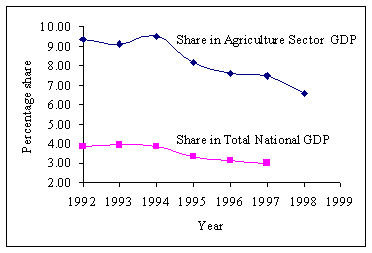
Fig. 18. Share of forestry in GDP of agriculture sector and of total country
Financial allocations to forestry sector, apart from being inadequate, suffer from significant annual variations (Appendix, Table 38). This limits the ability to plan long-term forestry development programs. Uncertainties in procurement of foreign grants and loans to forestry sector further exaggerates this problem (Appendix, Table 39).
The above context provides a cautionary picture for forest sustainability. Reduced population and livestock pressure, an improved level of per-capita income, developed of human resources, sufficient financial allocations to the forestry sector and improved enforcement of laws and regulations are needed to sustainably satisfy the requirements of society while maintaining forest health and productivity.